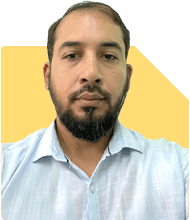Ramalingam Kalirajan |4249 Answers |Ask -Follow
Mutual Funds, Financial Planning Expert - Answered on Jul 02, 2024
He has an MBA in finance from the University of Madras and is a certified financial planner.
He is the director and chief financial planner at Holistic Investment, a Chennai-based firm that offers financial planning and wealth management advice.... more

I am 35 years working as an IT professional.Due to other responsibilities I started MUtual fund last year with 40k every month. quant active, small and Mid cap and ICICI prudential bharat Should I re balance these funds or need to check some other funds.
Understanding Your Current Investment
You’ve started investing in active, small, and mid-cap funds, as well as an ICICI Prudential Bharat fund. Each type of fund serves different purposes and has unique risks and rewards.
Small and mid-cap funds can provide high returns but are more volatile.
Active funds aim to beat the market through expert stock selection.
Evaluating Fund Performance
Firstly, it's important to evaluate how your current funds have been performing. Check the returns of each fund over the past year, three years, and five years.
Consider their performance compared to their benchmark and category peers.
If any fund consistently underperforms, it might be time to consider alternatives.
Importance of Diversification
Diversification helps in spreading risk. By investing in different types of funds, you reduce the impact of any single fund's poor performance.
It's great that you have a mix of active, small, and mid-cap funds.
However, it's crucial to ensure you’re not overly concentrated in any one sector or market cap.
Actively Managed Funds vs. Index Funds
Actively managed funds aim to outperform the market through strategic stock selection. This can lead to higher returns, especially in a volatile market.
Index funds, on the other hand, simply track a market index. They tend to have lower costs but often provide lower returns compared to actively managed funds.
Considering your choice of actively managed funds, you're positioned to potentially benefit from higher returns, provided the fund manager's strategies pay off.
Regular Funds vs. Direct Funds
Direct funds have lower expense ratios as they don't include distributor commissions. However, they require you to choose and manage your investments independently.
Investing through a Certified Financial Planner (CFP) with mutual fund distributor (MFD) credentials ensures professional guidance. They can help you navigate market changes and rebalance your portfolio when needed.
The slightly higher cost of regular funds can be worthwhile due to the expert advice and support you receive.
Rebalancing Your Portfolio
Rebalancing involves adjusting your portfolio to maintain your desired asset allocation. It’s essential to review your portfolio at least once a year.
Look at the performance of each fund and your overall investment goals.
If one type of fund has grown significantly, it may dominate your portfolio, increasing risk.
Rebalancing can help you realign your investments with your risk tolerance and goals.
Considerations for Adding or Switching Funds
Before adding new funds or switching existing ones, consider the following:
Fund Objectives: Ensure the fund’s objective aligns with your financial goals.
Risk Profile: Understand the risk associated with each fund and ensure it matches your risk tolerance.
Expense Ratio: Lower expense ratios can significantly impact your returns over the long term.
Past Performance: While past performance is not a guarantee of future returns, consistent performance over time is a good indicator.
Professional Advice
A Certified Financial Planner can provide personalized advice based on your financial situation and goals. They can help you choose the right funds, monitor their performance, and make necessary adjustments.
Their expertise can be invaluable in navigating market fluctuations and optimizing your investment strategy.
Staying Informed
Stay updated with market trends and fund performance. Regularly read financial news, attend webinars, and consult with your financial planner.
Being informed helps you make better investment decisions and stay on track with your financial goals.
It's commendable that you have started investing Rs 40k every month despite your busy schedule. Balancing work, responsibilities, and investments is not easy.
Your commitment to securing a financially stable future is truly impressive. Keep up the excellent work!
Continuous Learning and Adaptation
The financial market is dynamic, and continuous learning is crucial. Adapt your strategy as needed based on market conditions and personal circumstances.
Remember, the goal is not just to invest but to invest wisely.
Final Insights
Investing is a journey, and you’ve taken significant steps by starting mutual funds. Regularly evaluate and rebalance your portfolio to align with your goals.
Seek professional advice to navigate complexities and optimize your strategy. Stay informed and adaptable to changes.
Keep up the dedication, and you’ll likely achieve your financial aspirations.
Best Regards,
K. Ramalingam, MBA, CFP,
Chief Financial Planner,
www.holisticinvestment.in
You may like to see similar questions and answers below
Omkeshwar Singh | Answer |Ask -Follow
Head, Rank MF - Answered on Oct 17, 2022
Sunil Lala |193 Answers |Ask -Follow
Financial Planner - Answered on Jun 06, 2023
Ulhas Joshi |262 Answers |Ask -Follow
Mutual Fund Expert - Answered on Mar 07, 2024
Ramalingam Kalirajan |4249 Answers |Ask -Follow
Mutual Funds, Financial Planning Expert - Answered on May 02, 2024
Aasif Ahmed Khan |33 Answers |Ask -Follow
Tech Career Expert - Answered on Jul 04, 2024
Ramalingam Kalirajan |4249 Answers |Ask -Follow
Mutual Funds, Financial Planning Expert - Answered on Jul 04, 2024
Ramalingam Kalirajan |4249 Answers |Ask -Follow
Mutual Funds, Financial Planning Expert - Answered on Jul 04, 2024
Aasif Ahmed Khan |33 Answers |Ask -Follow
Tech Career Expert - Answered on Jul 04, 2024
Aasif Ahmed Khan |33 Answers |Ask -Follow
Tech Career Expert - Answered on Jul 04, 2024
Aasif Ahmed Khan |33 Answers |Ask -Follow
Tech Career Expert - Answered on Jul 04, 2024
Nayagam P P |1307 Answers |Ask -Follow
Career Counsellor - Answered on Jul 04, 2024
Aasif Ahmed Khan |33 Answers |Ask -Follow
Tech Career Expert - Answered on Jul 04, 2024
Aasif Ahmed Khan |33 Answers |Ask -Follow
Tech Career Expert - Answered on Jul 04, 2024
Nayagam P P |1307 Answers |Ask -Follow
Career Counsellor - Answered on Jul 04, 2024























